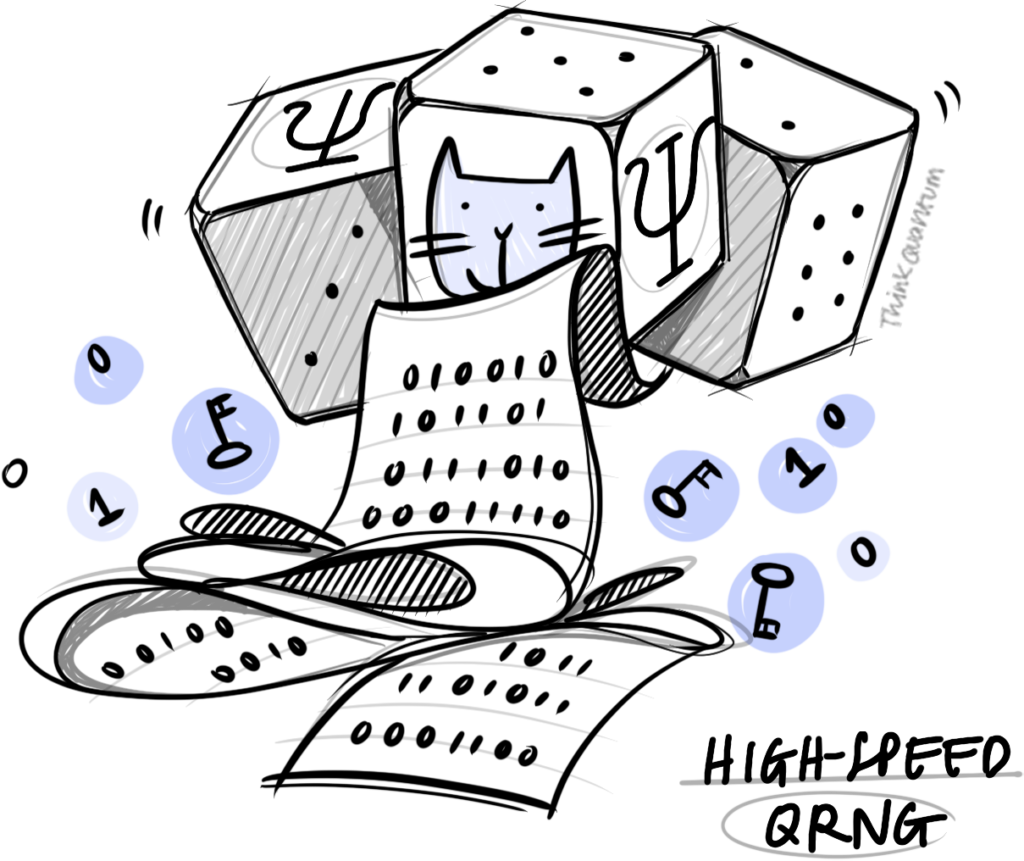ThinkQuantum Technology
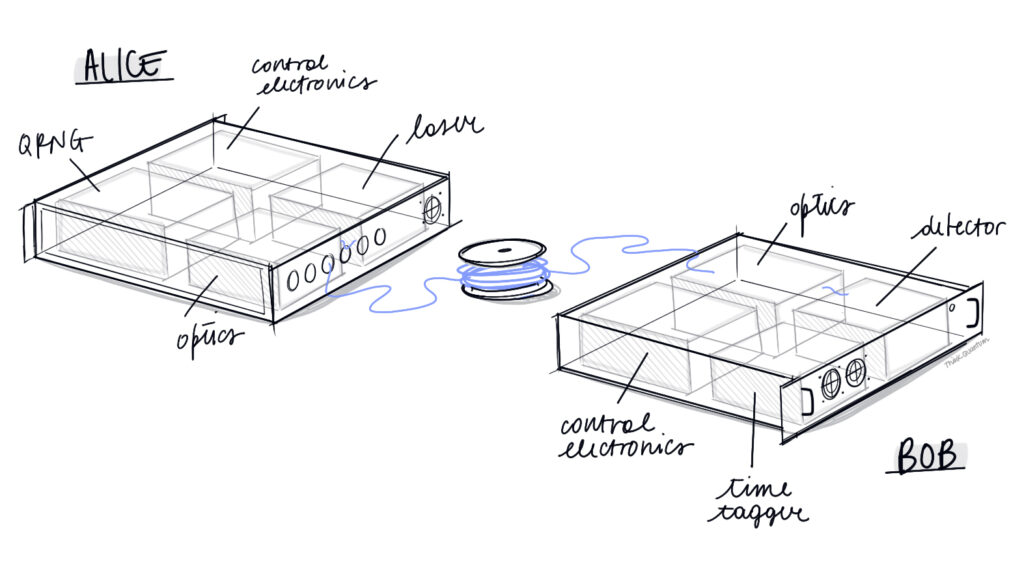
Contrary to standard cryptographic solutions, the security of QKD is guaranteed by the laws of physics and no by computational assumptions. This represents a shift of paradigm, since the development of mathematical techniques or the advent of the quantum computer will put these classical cryptographic methods at risk.
Typical optical elements used in QKD and QRNG devices are electro-optical modulators, polarization beam splitters, fiber patches, single photon detectors, lasers, field programmable gate arrays, systems on a chip, analog-to-digital converters. The integration of these components allows for the realization of the QKD transmitter (called Alice), capable of generating and sendind quantum states according to an initial classical digital string provided by the QRNG, and the QKD receiver (called Bob), which is able to readout the transmitted qubits and store a digital string to perform the post-processing.
At ThinkQuantum our team of physicists and engineers works together to realize quantum communication devices. ThinkQuantum offers QRNG and QKD solutions – covering fiber, free-space and hybrid links for two-point communication, daisy-chain (serial) and star network configuration. ThinkQuantum devices are based on patented designs and they can be easily integrated into the current telecommunications networks.
Fiber-based QKD
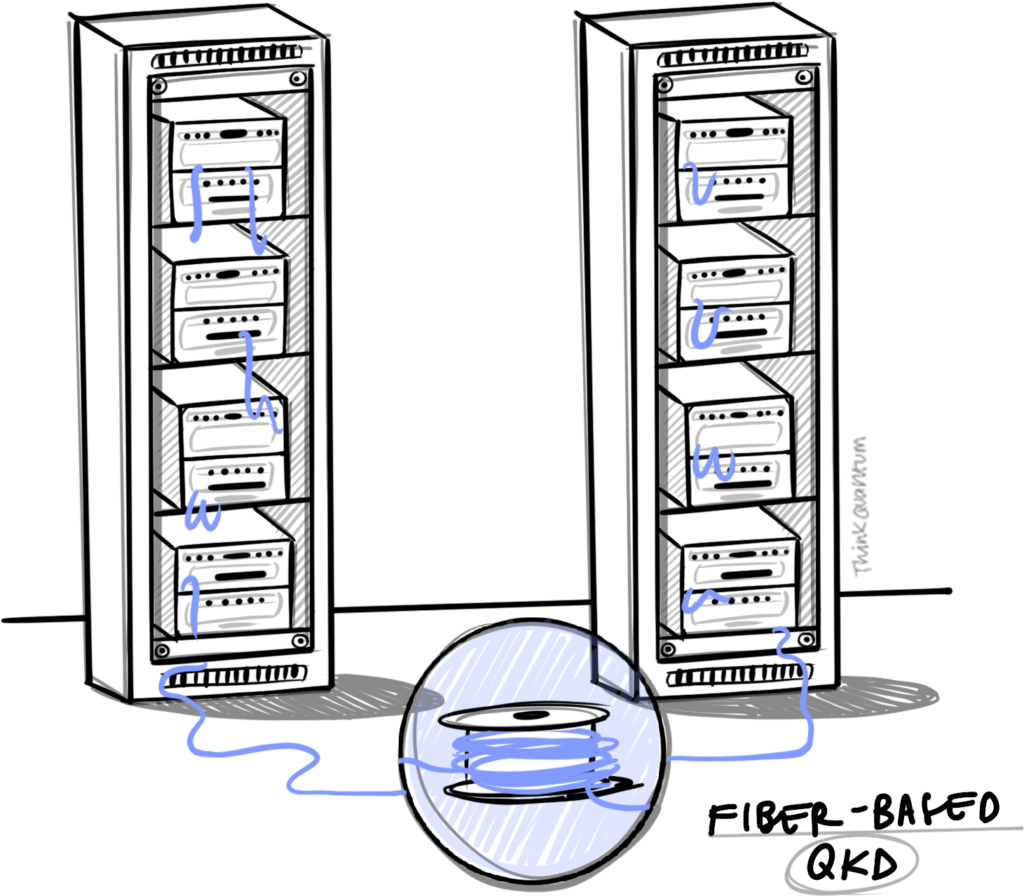
Optical fibers represent the backbone of our modern communication systems with ubiquitous use from data center interconnecting to long haul links
In many cases these links are used to transport highly sensitive information. In such cases QKD could be an ideal solution to secure the data with the highest level of security.
At ThinkQuantum we have developed QKD systems that reduce the resources required for its deployment, thus simplifying the integration of the system with pre-existing fiber communication networks. Furthermore, ThinkQuantum uses patented state-of-the-art schemes that guarantee record performances in terms of source-intrinsic quantum bit error rate and temporal stability.
Free-space QKD
Free-space quantum communication allows for a point-to-point link between two locations, without the need of an optical fiber
This is the best solution for those locations that are not reached by the fiber infrastructure, or for those applications that require fast and/or not-permanent deployment of a quantum communication link. It is also the only solution for communication with moving platforms such as drones, high-altitude platform, aircrafts, ships.
At ThinkQuantum we develop and deploy free-space quantum communication terminals that guarantees full-day operation. Our terminals can be used for one-way or two-way quantum communication, connecting two optical fibers over the air, thus avoiding trusted nodes among the peers, and allowing compatibility with standard telecom quantum communication devices.
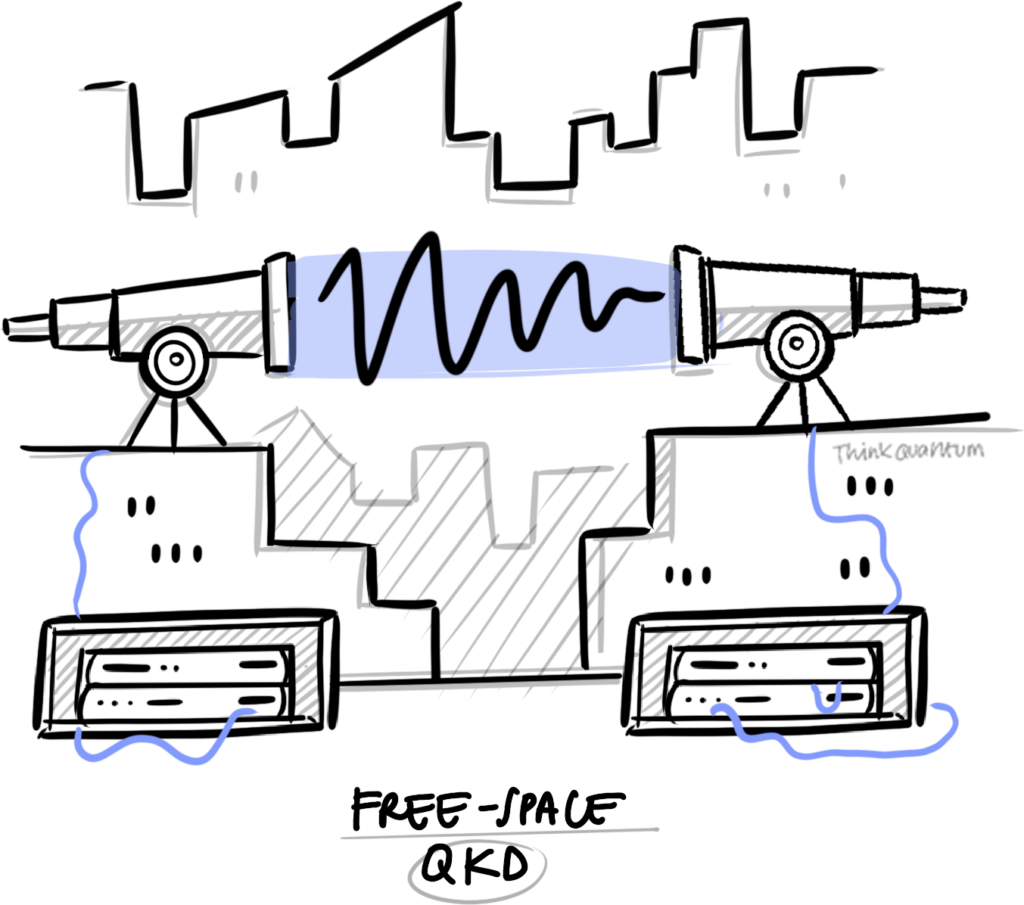
Satellite Quantum Communication
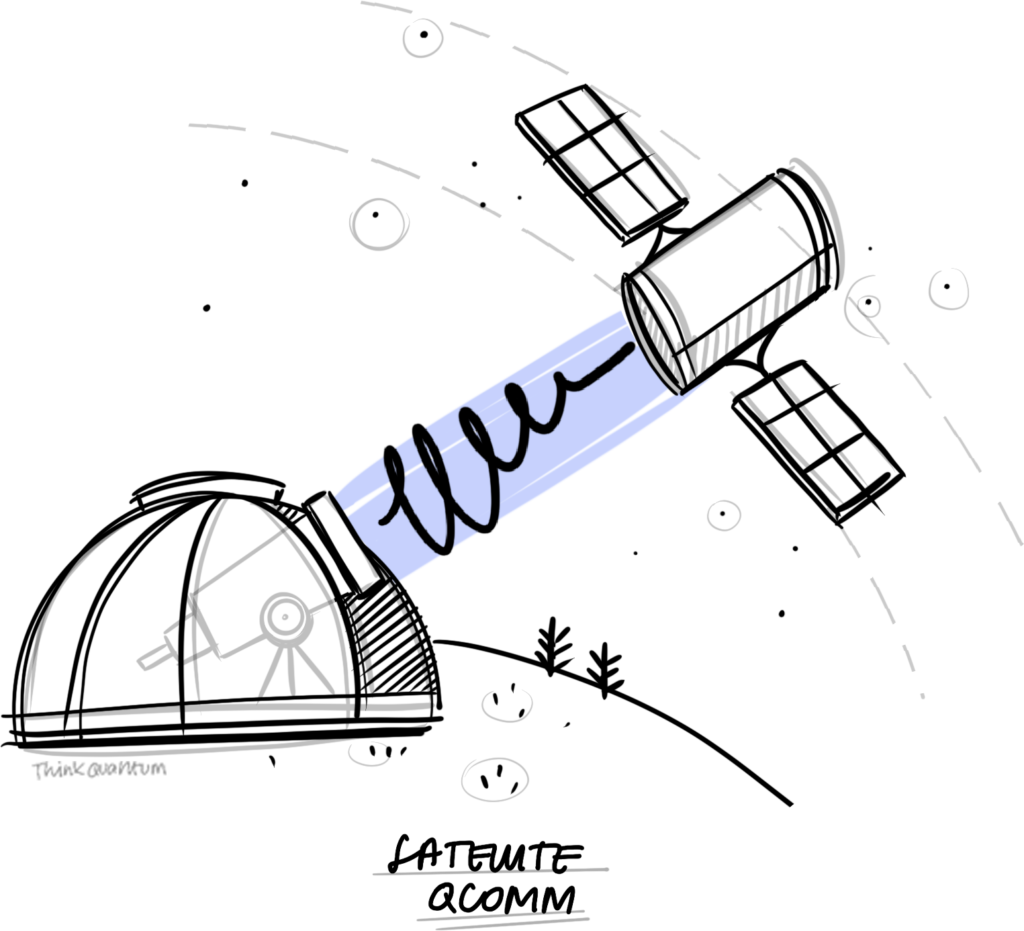
Long-distance quantum communication requires to overcome the unavoidable losses of fiber-based implementations, which are therefore limited to few hundreds of kilometers
Since the technological maturity of the quantum repeater is still far away from concrete applications, the most effective way to extend quantum communication and QKD to the global scale is to use satellites and ground stations exchanging single photons.
Space quantum communication requires the capability of designing and developing both the optical and the quantum communication payloads on the satellite side, as well as the competence to realize dedicated telescopes coupled to the quantum hardware on ground.
Thanks to the contribution of the lead Italian scientists in the context of space quantum communication and of one of the most recognized professional telescopes producer in the world, at ThinkQuantum we can effectively tackle the complexity of this new space technology.
QRNG technology
Random numbers are an invaluable resource for many different applications, such as simulations, gaming, and security
In particular, they are a fundamental building block for both classical and quantum cryptography. Indeed, their security relies on the unpredictability of the random numbers, and the privacy of the encrypted data is compromised if the random number generators are flawed.
The majority of random number generators used today are based on deterministic algorithms, meaning that no matter how well the generator is designed, it will always be predictable. In the last years, the flaws in these RNG have been exploited by attackers to realize important security breaches of different cryptographic systems.
On the other hand, a QRNG exploits the intrinsic randomness of Quantum Mechanics to deliver secure and private random numbers. The processes at the heart of a QRNG are inherently non-deterministic, and they cannot be predicted, even if the full status of the system is known with absolute precision.
Our technology combines high-security standards with state-of-the-art performances at low cost, providing an optimal solution for a broad set of applications requiring the highest levels of security.
